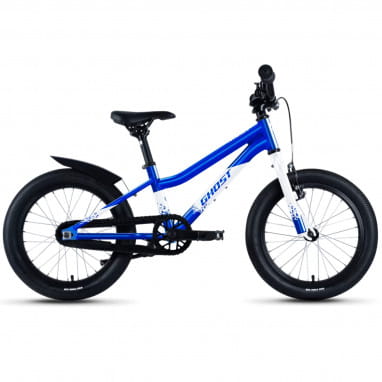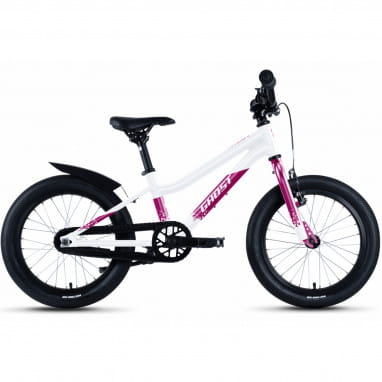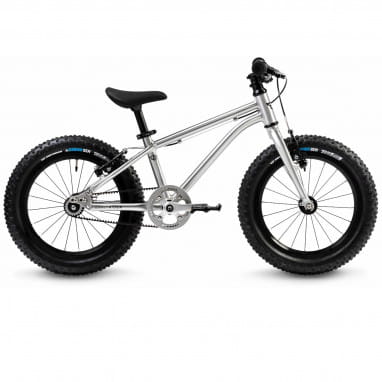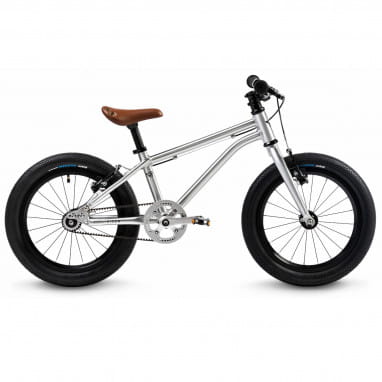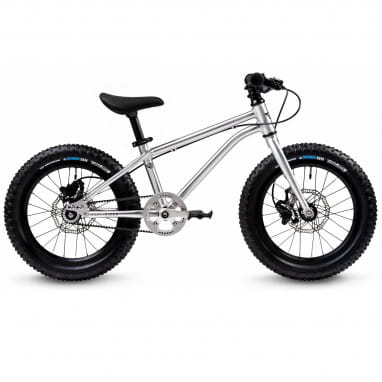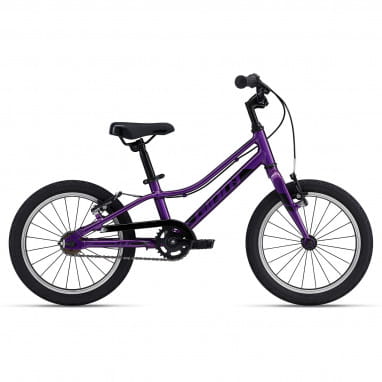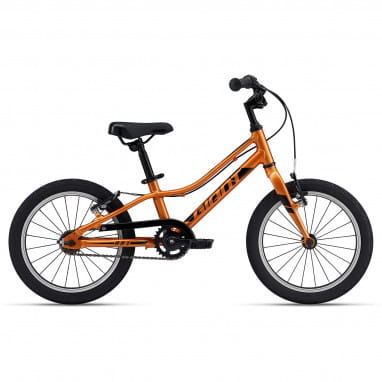If you are looking for a bike for four-year-olds, you may be right here. Possibly, because to buy the right bike you should not only be guided by the age of the child, much more important is the stride length. Here you can learn how to measure it and then find a children's bike that fits well to girls and boys of kindergarten age.
Most children already have some experience on two wheels when they are big enough for a bike in 16 inches, they have already ridden on a smaller bike or have made the first rounds with a running bike. In general, bicycles of this size nevertheless hardly differ from the smaller children's bikes, the bicycle frames are larger, but the technology is the same.
1. For what age are children's bicycles with 16 inches suitable?
From 105cm or a leg length of 48cm, a 16 inch bicycle is most suitable, many children reach this size at around four years. However, some kids are smaller at this age, others are already a bit taller; then you should look at the 14-inch bikes or the larger bikes.
From about 4 years old, a height of 105cm or more and an inside leg length of about 48cm, children need a children's bike in 16 inches.
2. things to know about the 16-inch children's bike
.
The equipment is still very economical with a 16 inch bike. Indeed, these bikes are still more toys than means of transport, so they do not need roadworthy equipment. Since some children treat their bike at this age still rather savagely, so no expensive components can break, even if the bike is parked rudely lying. A chain guard is very practical in this case, it protects the drive on the one hand, and also prevents the clothes from getting caught in the chain. Also the robust aluminum frames tolerate a less gentle treatment usually well.
Children's bicycles with 16 inches usually do not have a gear shift, it would still overtax the children. Also on disc brakes is renounced, they would be too heavy, too expensive and besides children brake with something less biting rim brakes safer. Some models also have a hand brake and a coaster brake.
Like all children's bicycles, a 16-inch bike should still have a smaller and therefore more child-friendlyQ-factor. The Q-factor is, roughly explained, the distance between the two pedals and this must of course be smaller for a child than for an adult. Most manufacturers who have children's bikes in the program, but anyway pay attention to this detail when choosing the crank.
The size designation of the bike corresponds - as with all children's bikes - the size of the wheels. So here the children ride on wheels with a diameter of 16 inches. By the way, one inch has 2.54cm and corresponds to the inch common in the English-speaking world. A children's bike in 16 inches thus has a tire diameter of 40.64cm. Most children's bikes have slightly thicker tires, they help to find a stable grip on the road. In addition, they cushion well, they can dampen the ground somewhat, even if the kids over gravel, through the fall protection on the playground or over the meadow brettern.
A children's bike with 16 inch
- Has a durable, lightweight aluminum frame
- has a chain guard
- Has no gears
- has rim brakes
- or has a rim brake and coaster
- has wide wheels with 16 inch diameter
- has child-friendly components, for example cranks with a suitable Q-factor
- has little equipment, at most light mudguards made of plastic are mounted
3. So you buy the right children's bike
.
As you have already read, the age of the children is more of a rough indication than an order of magnitude, but it is a good yardstick for the equipment, because it must of course be different for a toddler than for a schoolchild or a teenager. The fewer components a child's bike comes with, the easier it will be for children to operate it, and it will weigh less as well.
To find a bike in the right fit, you'll need your child, a yardstick and a book. With the child standing (preferably in shoes) with his back to the wall, you can wedge the book between his legs and push it up to his crotch. Then you measure from the floor to the top of the book and you know the step length or leg length. That tells you if a bike will fit or not. In the item descriptions here on BMO, you'll find an indication from the manufacturer on most children's bikes as to what inside leg length a model fits best.
Since there is little equipment, the function of the bikes is mostly comparable, but there are of course high-quality models and simpler, budget-friendly bikes.
A children's bike with as deep a step-through as possible will save your child from wobbly maneuvers when getting on and off, the frames are of course still sturdy enough for all sorts of adventures.
There are 16-inch bikes with support wheels and without. Since many kids don't need them, manufacturers don't generally supply them, but you can buy them separately if any are needed.
4. How to properly adjust a child's bike
.
Four-year-olds feel even safer when they can put both feet on the ground, so the saddle must first be adjusted to a height where this is easily possible. The posture of the upper body should not be too low, so on a good children's bike you can loosen the clamp on the handlebar and twist the handlebars a bit. So you can adjust the bike to an upright sitting position. Afterwards, the brake levers must also be optimally positioned again.
On a good children's bike, you can finally adjust the grip width of the handbrakes and adapt them to the length of the fingers.
Now the children's bike is ready to ride, you can start! You realize that the bike has become too small when the rider bends the knees too much and pulls upwards. Then it's time - the bike needs to be readjusted.
You'll often find a mark on the seatpost and stem shaft that indicates how far the tubes need to be recessed in the mounts to keep them stable. When your offspring has grown up enough to see the markings, it's time for a new bike!
5. 16 inch, 12 inch, inch, 24 inch- do you have to buy a bike for your kid in every size?
There are children's bikes in many sizes, in 2 inch increments it goes from 12 inches to 26 inches. By the time you get to the adult bike, that would mean seven different kids' bikes plus a running bike - a lot! But don't worry, most of the time you don't have to buy every size bike, many kids skip one size or another completely - which one depends on individual abilities and growth stages. Since the saddle and handlebars on children's bikes are easily adjustable for height, kids can often go straight from a 16-inch bike to 20 inches, for example, saving you a lot of money. Often, 12- and 14-inchers are also still bridged with a runner. As long as their knees don't have to be bent or pulled up too much when pedaling, kids will ride efficiently on the slightly smaller bike, they usually bike much safer to boot, because they can control a small bike better than one that's too big.
While the bike itself is very flexible here, however, there is one accessory that must fit perfectly: the children's bike helmet! The head protection must fit well and be carefully adjusted, otherwise it can not protect your child in a fall in the best possible way. But that's no problem either, we have a large selection of children's helmets in our online store, as well as bicycle clothing for children, it's best to order the bike outfit at the same time when you buy a new children's bike!

